Mathematics - Post-Baccalaureate Certificate
Spring: n/a
Summer: May 1
Online
Overview
Our 4-course Post-Baccalaureate Certificate in Mathematics program is intended for students with a bachelor's degree (in any field) who would like to expand or deepen their mathematical skills for use in the workplace or in preparation for graduate programs in mathematics. The program is offered in both an on-campus format and an online summer term intensive.
Mathematics Post-Baccalaureate Certificate — Online Summer Term Intensive Option
Earn your mathematics post-bacc certificate this summer online. The certificate program includes 4 mathematics courses: 2 courses taken in Summer 1 and 2 courses in Summer 2. Students also have the option to start their program in either Summer 1 or Summer 2 and complete the certificate in the fall. Most classes in the fall are in-person, though, Math 70 and Math 166 will be available online. *For application purposes, please apply for Fall 2024 and indicate your interest in the Summer intensive on the application by May 1.
| Sample Summer 1 (May 22 - June 28) | Sample Summer 2 (July 2 - August 9) |
| Choose 2 of the following: | Choose 2 of the following: |
| Math 65 | Math 65 |
| Math 70 | Math 70 |
| Math 87 | Math 123 |
| Math 165 | Math 135 |
Program Outcomes
Upon graduation, you will have achieved a deeper understanding of basic mathematics and how to use quantitative reasoning in a variety of settings, as well as have developed your quantitative and problem-solving skills.
Graduates of the program have the necessary background to pursue a master's degree in Mathematics or Applied Mathematics. Many graduates apply their post-bacc learning and experience directly to their professional work.
Application Requirements
- Application fee
- Resume/CV
- Personal Statement
- Official TOEFL, IELTS, or Duolingo English Test, if applicable
- Transcripts
- One letter of recommendation
Tuition and Financial Aid
See Tuition and Financial Aid information for GSAS Programs. We recognize that attending graduate school involves a significant financial investment. Our team is here to answer your questions about tuition rates and scholarship opportunities.
Faculty

Fulton Gonzalez

Fulton Gonzalez
Research/Areas of Interest: Noncommutative harmonic analysis, representations of Lie groups, integral geometry, and Radon transforms
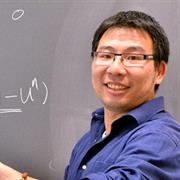
Xiaozhe Hu

Research/Areas of Interest: Scientific computing and numerical analysis; Parallel multigrid and multilevel methods for large-scale coupled systems; Efficient numerical methods for reservoir simulation, fluid-structure interaction, and other applications.

James Adler

James Adler
Research/Areas of Interest: Scientific computing and numerical analysis: Efficient computational methods for complex fluids, plasma physics, electromagnetism and other physical applications.

Bruce Boghosian

Bruce Boghosian
Research/Areas of Interest: Applied dynamical systems, applied probability theory, kinetic theory, agent-based modeling, mathematical models of the economy, theoretical and computational fluid dynamics, complex systems science, quantum computation Current research emphasis is on mathematical models of economics in general, and agent-based models of wealth distributions in particular. The group's work has shed new light on the tendency of wealth to concentrate, and has discovered new results for upward mobility, wealth autocorrelation, and the flux of agents and wealth. The group's mathematical description of the phenomenon of oligarchy has also shed new light on functional analysis in general and distribution theory in particular. Secondary projects include new directions in lattice Boltzmann and lattice-gas models of fluid dynamics, kinetic theory, and quantum computation.

Christoph Borgers

Christoph Borgers
Research/Areas of Interest: Anomalous diffusion, mathematical neuroscience

Corey Bregman

Corey Bregman
Research/Areas of Interest: Geometric group theory, low-dimensional topology, CAT(0) spaces

Boris Hasselblatt

Boris Hasselblatt
Research/Areas of Interest: Geometrically motivated hyperbolic dynamics — Hasselblatt's research, undertaken with colleagues from several continents, is in the modern theory of dynamical systems, with an emphasis on hyperbolic phenomena and on geometrically motivated systems. He also writes expository and biographical articles, writes and edits books, and organizes conferences and schools. His publication profile can be viewed at https://mathscinet.ams.org/mathscinet/author?authorId=270790 (with a subscription). Former doctoral students of his can be found in academic positions at Northwestern University, George Mason University, the University of New Hampshire, and Queen's University as well as among the winners of the New Horizons in Mathematics Prize.

Misha Kilmer

Misha Kilmer
Research/Areas of Interest: Numerical Linear and Multilinear Algebra, Scientific Computing, Image Reconstruction and Restoration

George McNinch

George McNinch
Research/Areas of Interest: The structure and representations of algebraic groups

James Murphy

James Murphy
Research/Areas of Interest: Machine learning, harmonic analysis, statistical learning, graph theory, data science, computational mathematics, image processing, signal processing

Kasso Okoudjou

Kasso Okoudjou
Research/Areas of Interest: Time-frequency analysis, pure, applied, and numerical harmonic analysis; analysis and differential equations on fractals and graphs.
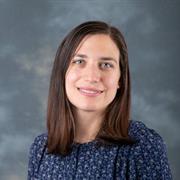
Samantha Petti

Samantha Petti
Research/Areas of Interest: computational biology, algorithms, probability, fitness landscapes, evolution, protein structure, statistical inference
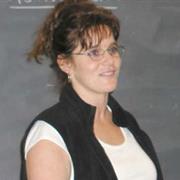
Kim Ruane

Kim Ruane
Research/Areas of Interest: Geometric Group Theory/Topology
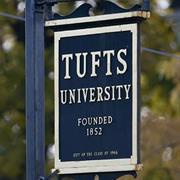
David Smyth

David Smyth
Research/Areas of Interest: Algebraic Geometry
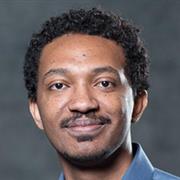
Abiy Tasissa

Abiy Tasissa
Research/Areas of Interest: Matrix completion, compressive sensing, distance geometry

Montserrat Teixidor I Bigas

Montserrat Teixidor I Bigas
Research/Areas of Interest: To each point on a curve, one can often associate in a natural way a line or plane (or higher dimensional linear variety) that moves with the point in the curve. This set of linear spaces is called a vector bundle. Vector bundles appear in a variety of questions in Physics (like the computation of Gromov-Witten invariants) . Moreover, they provide new insights into old mathematical problems and have been used to give beautiful proofs to long standing conjectures as well as striking counterexamples to some others.

Loring Tu

Loring Tu
Research/Areas of Interest: Algebraic geometry, topology, and differential geometry
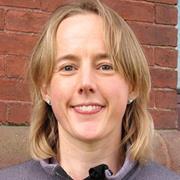
Genevieve Walsh

Genevieve Walsh
Research/Areas of Interest: Hyperbolic manifolds and orbifolds, low-dimensional topology, group actions